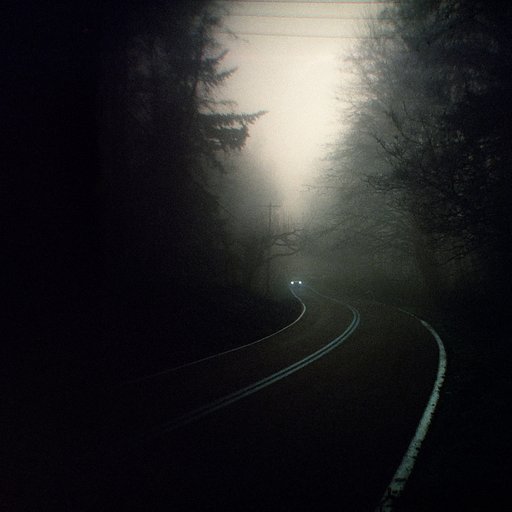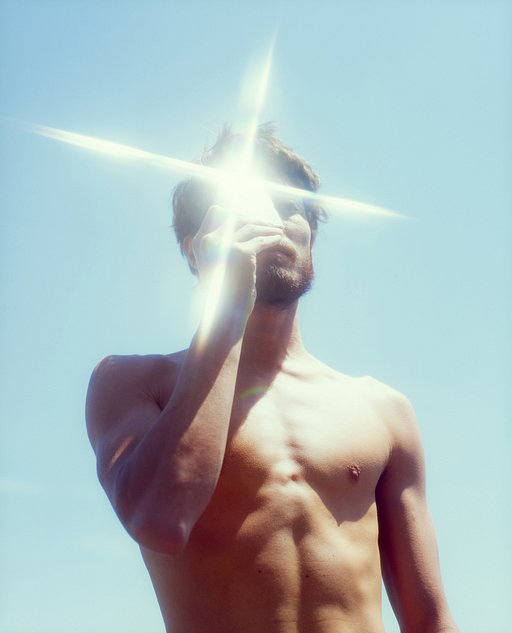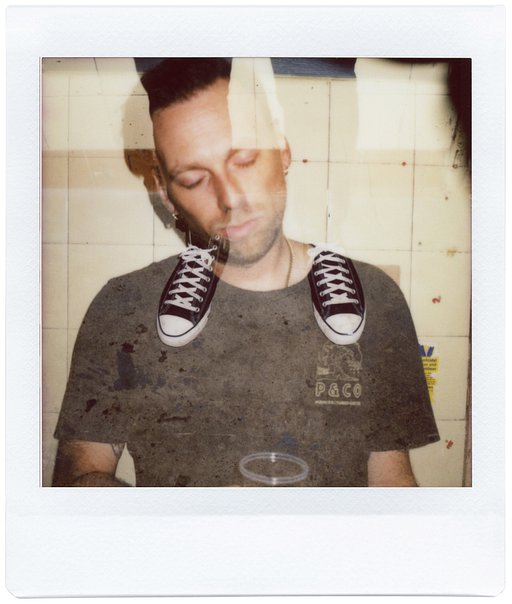Documenting Life, Frame by Frame — An Interview With Patrick Joust
14 Share TweetTo many, photography is a hobby. To some, it’s a career. But there are others that look at it a different way: Patrick Joust is one of those people. To him, photography is a reflection — a way to see things in a different manner. With it comes understanding and a desire to push beyond his own trepidations and worries. Patrick loves how it can be so liberating, that he can express himself in a matter of frames. We were fortunate enough to get a hold of him for a short but meaningful interview. We hope you learn as much from him as we did.

Hello, Patrick. Welcome to the Lomography Online Magazine! How did you get started on your photographic journey?
I started taking pictures about 15 years ago when I moved to Baltimore. I came as an AmeriCorps volunteer, and the job involved going all over the city doing anything from teaching kids how to read to helping adults learn how to use a computer. While I had visited Baltimore before, my job had me going to parts previously unfamiliar. I simply wanted to take pictures of some of what I saw but in a “poetic” or “artistic” way. I had actually spent quite a bit of time writing poetry. It wasn’t especially good poetry, but it made me realize that it was important to have an active way to engage with thoughts and interpret my surroundings. Photography was another way to do this.
One of my first cameras was a Canonet QL17. At the time I didn’t even know what a rangefinder was, but I read good things online and gave it a try. It was easy to carry around while walking or biking. It took many years to get back good work on a consistent basis, but that didn’t matter because I just enjoyed the process of looking around in a deliberate way and trying to match my photos with my mind’s eye.
How would you define photography?
A record of light and dark on a surface.

What do you like most about it?
I love the democratic nature of photography. Not everyone is a poet with a camera but a lot of people can express something interesting with one, which is part of the reason old or found photos can be so compelling. It’s easy for anyone to take pictures and it’s getting easier all the time. For me, it has become a way to engage with the world and try to make some kind of understanding from what often feels like chaos. While I think such an understanding is somewhat illusory, I don’t believe that it’s a complete illusion. At the risk of sounding hoity-toity, taking pictures approximates, for me, a search for truth. It’s a way of examining the world without marring or dissecting it. It’s a bow to, and a recognition of, what is special in my surroundings. And, of course, you are creating an object, a souvenir, that mirrors what you see but also becomes something separate. When sorted and sequenced these objects create the illusion of a whole new world.
Your street photographs have a documentary look about them. They feel so natural, your subjects look so at ease. Was this a style you were going for?
Thank you. I don’t think I’ve ever tried to develop a style. My main issue, when I first started taking pictures, was trying to figure out what kind of pictures I wanted to make. It was a clumsy process but since the stakes were low (this wasn’t my job and I wasn’t trying to get an MFA) I could take my time. Everyone’s process is different, but I think the way it evolved (slowly) worked well for me.
I’ve just started reading R.J. Smith’s book American Witness: The Art and Life of Robert Frank. I’m at the point where Frank’s Guggenheim Fellowship application is chronicled (the proceeds of which he used to make The Americans). Frank got extensive help with the application from Walker Evans and one of the lines they considered but didn’t actually use in the application was, “What happens when a strong man sets out to work with an untethered eye.” I like the phrase “untethered eye” and the notion that if you can have time to let yourself loose with a camera, interesting things can happen. It’s a nice turn of phrase, even if what it amounts to in practice is impossible to quantify. Important things are usually impossible to quantify anyway.
When I photograph I often feel “untethered” and free. I’m pleased to read in your question that my work feels natural and that my subjects look at ease, because that’s certainly how I feel when I’m taking the pictures. Besides the vital time I spend with my family, there is nothing that makes me feel better than taking pictures. It’s important feedback for a guy like me, who tends to ponder pessimistically on the prospects for human progress. It’s important for me to have this collection of pictures that do their best to bow to the dignity of everyday life. The pictures form an argument against my darkest thoughts.

Why do you make images?
For most of my life, I spent a lot of time-consuming other people’s work. I read more and visited more art museums in high school and college than at any other time. I watched a lot of movies. All of this was a great education but, for whatever reason, the idea of making my own work was never part of it. These also weren’t the easiest years of my life. I certainly didn’t have a hard life, but I made things hard on myself. When I discovered photography, it helped. The amount I got out of it corresponded with what I put in.
The other day, when I was photographing with my friends and fellow photographers Camille and Chinwe, I started talking about how, even after taking hundreds of portraits of people I meet on the streets of Baltimore and elsewhere, I feel like it’s the most amazing thing that strangers are so generous that they let me take their picture. It feels like a gift because it is a gift. I also like photographing at night and taking pictures of static scenes, but people are the most interesting subject, even if I still have to push against my shyness to take those pictures.

What's your favorite photo series so far? Why?
My Baltimore series is my favorite. Baltimore is where I started photography but I could never have imagined that I would make thousands of images here of people, places, cars, and moods. And as I stated in the previous question, it’s the people I have met here, however brief the encounter, that has inspired me to keep going.

What do you usually look for in a scene?
That’s a tough one... I like to be able to isolate someone or something in a scene, particularly when I’m shooting 6x6. Taking a picture is as much about what is excluded as what remains in the frame. When I’m taking pictures with a 6x9 camera, I’m often thinking about capturing a broader landscape. When I’m shooting with my Olympus XA, it’s little urban tidbits that I just want to record. I very much like color and shoot more color film than anything, but I also like the simplicity of black and white. There are certain patterns you can see in my work. People, old cars, old buildings, etc., but I like to have, when possible, a little more complexity in a scene. There’s no rubric though.

What makes you stay with film?
Film is beautiful. Though I grew up using cheap 35 mm cameras, I just shot film because that’s what was available. I came to realize that there were better 35 mm cameras where I could have more control over my pictures, but it wasn’t until about 10 years ago that I tried shooting medium format. By that point, digital was well established and I was kind of debating how much more film I would be shooting. I bought a Super Ricohflex (twin lens reflex) camera for 25 dollars, thinking I’d stick it on a shelf for decoration. I started using it though and I couldn’t believe how beautiful medium format film was. The most banal subjects looked beautiful. I really started to appreciate what Stephen Shore calls the “surreal density” of the photograph. It was like discovering photography all over again. Even now I can find myself mesmerized by basic pictures of flowers or trees that are recorded with a 6x6 camera. I shoot all kind of formats, including digital, instant film and 35 mm, but medium format dominates and using it represented a turning point in my work.
In addition to the beauty of medium format film, I love using a twin lens reflex camera. I like the simplicity. I like looking down, and the vantage point of the waist-level finder. Digital is great but if it were to replace film it would be a definite loss. I think of digital as another format from many to choose from, not a substitute for everything else.

What are your predictions for the film photography community and industry? How do you see it in the next five, ten years?
Oh, I don’t know. I’ve certainly been happy with recent developments and the renewed interest in film among a lot of people, but I also think it’s important not to get tribal or snobby about film. I hate the film vs. digital debates. Digital has opened up photography to a much wider audience. Getting back to the whole idea of photography being a democratic medium, this is a good thing. I hope that more people are recognizing however that just because you can take pictures with your phone, every other photographic process isn’t irrelevant or obsolete. Because there has always been a close pairing of technology with photographic processes, there is a tendency to think of the next thing in photography in terms of technological progress and as a replacement for what came before. This might be true in commercial and scientific applications of photography but it is certainly not when it comes to making art. That kind of thinking is a trap. It’s important for an artist to be able to use the materials she/he needs. For me, that mostly means using film.

What challenges you in your career?
The biggest challenge is probably managing time. I have a wife and son (and a daughter on the way). I want to spend time with them. It’s always important to find a balance. If I have time to take pictures and sort through them afterward, I’m all set. My wife is a writer and artist herself and is very supportive of what I do. I also have a lot of creative friends who are never short on encouragement. I think it’s a lot easier though for photographers to find ways to work. It’s not like a painter who must set aside a certain amount of time to mix paints, do the work, and then clean up afterward. I can go for a walk with my son and bring a camera. Even the big TLRs I carry aren’t such a burden. So I can find ways to continue. Adaptation can be its own source of creativity.
When it comes to gear — do you think having a certain setup affects your ability to produce quality content?
I don’t think it’s true that the camera you use doesn’t matter. You don’t have to use a fancy camera to take good pictures (check out the cool work my friend Camille is doing with her 10 dollar Split-Cam), but there are a lot of ways to photograph to fit different preferences. Finding the right set up does matter, though it’s also important to be able to adapt. I photograph differently using different equipment. As I’ve already mentioned, the TLR has kind of been the mainstay of my work, but just because it works for me doesn’t mean it’s what everyone should use. I hope that variety can prevail.

What does a perfect day look like for Patrick Joust?
A perfect day is a lot like a day I had recently. I spent some time with my wife and son, I went out in the afternoon to take pictures of people in West Baltimore. There was some nice light. I had some great interactions. I read when I got home and edited photos.
Lastly, what's next for you?
I’m going to take more pictures.
We would like to thank Patrick for letting us use his images for this Magazine feature. If you're interested in his work, you may visit his website and Instagram for more.
written by cheeo on 2018-09-15 #people #interview #artist #film-photographer #patrick-joust


























No Comments